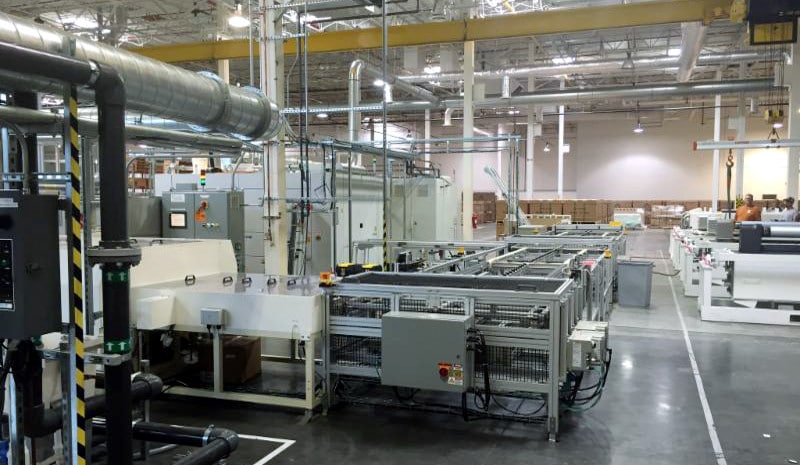In addition to the 26 module makers which the U.S. International Trade Commission reports quit U.S. manufacturing over the last five years, you can add one more name: Stion.
To be clear, Stion was a bit of a maverick to begin with. The company began commercial-scale production of copper indium gallium diselenide (CIGS) thin-film solar PV modules in late 2012, at a time when most thin film companies were being wiped out by low-cost crystalline silicon. And with most manufacturing moving to Asia, Stion’s presence as a solar manufacturer in the Deep South was also unusual.
However, this has all come to an end. Stion is now planning to sell off its Mississippi manufacturing facility and discontinue operations, only months before the potential implementation of trade action which could raise prices in the U.S. module market. It is unknown if the company will succeed in selling the factory as a turnkey facility, as it plans to, or whether it will have to sell its tools individually. Either way the $226 million in funding which it has raised may be largely up in smoke.
It is also unclear when the company’s estimated 200 workers will be laid off.
This news comes only two years after Stion placed a tool order which would have doubled the capacity at its Mississippi factory, which is estimated between 60 and 75 MW. Stion blames the collapse in module prices which began last summer for its inability to continue, citing “intense, non-market competition from foreign solar panel manufacturers, especially those based in China and proxy countries.”
However, others have different takes. SolarWakeup’s Yann Brandt notes that many thin film makers got into the business when polysilicon prices were high, but that the fall in silicon prices, including in late 2011, made most thin film products uncompetitive.
There is indeed a graveyard of former thin film makers. Outside of companies that manufacture and sell primarily within China, First Solar and Solar Frontier are the only companies which can produce more than 1 gigawatt of thin film PV modules annually.
And while the trade actions proposed by petitioners in the Section 201 case would definitely raise prices in the U.S. market, thin film solar is outside the scope of the case. This means that Stion would still have to compete globally with thin film makers like First Solar, which has long been one of the lowest-cost producers and in recent years has increased efficiencies dramatically.
This content is protected by copyright and may not be reused. If you want to cooperate with us and would like to reuse some of our content, please contact: editors@pv-magazine.com.









So the truth of the matter is, the chinese make better products,
and i have been trying for nearly 10 years to get AMERICAN
investors to consider doing what the CHINESE do,
have factories with dorms, have cafeterias, and do a big family thing.
Yes, so sad most worker drones are often zombies flakers, yikes.
IF ya know college grads and rulers have degrees,and ya realize the fact –
yet not a tarn bit of common sense between the 2 of them, they cannot replace craftsmanship and pride. even robots can not do that, your then ahead of that BELL curve idea.
i recon i know what i been doing since 1979 AD ,building or repairing, and doing every kind of solar gizmos- steam pressure, battery lights remote beaches for NAS corpus, sat trans missdion for USGS, selling solar shingles during the 90s, selling the first astro power and setting them up, repairing BP projects, and virtually every thing DOE did in TEXAS that had solar hot h20, now i got CHINESE solar and SWISS solar – YES available NOW that does the flex bit, and better that STIONED, they paid too much for the ceo AND his jokers, however it was the lack of dedication at the plant – that really did them in. CRAFTSMANSHIP IS lost in the USA,we gotta get that back.